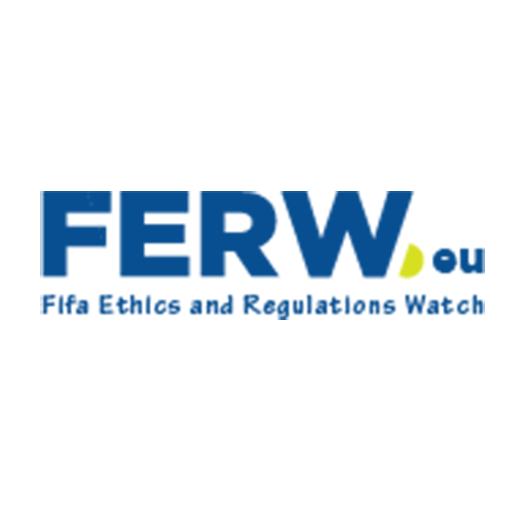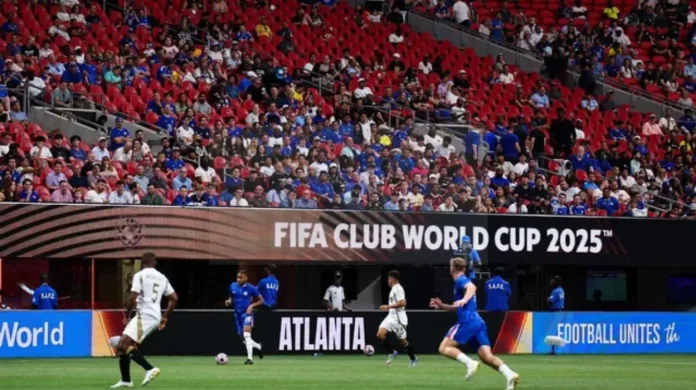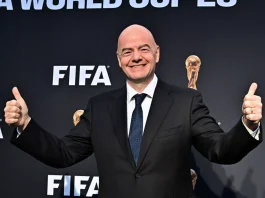The 2025 FIFA Club World Cup, held in the United States with an expanded format, was expected to be a major milestone in global club football. FIFA anticipated packed stadiums and vibrant atmospheres across multiple cities. Yet, while some marquee matches attracted record crowds, several fixtures suffered from embarrassingly low attendance, revealing a significant challenge for FIFA’s ambitions. This raises the question: why is the tournament experiencing such stark disparities in fan turnout?
How Do Attendance Figures Reflect the Tournament’s Success and Failures?
FIFA announced that nearly “1.5 million tickets had been sold” for the tournament as of mid-June 2025, with fans from over 130 countries attending matches. The opening weekend alone attracted over “340,000 fans across eight matches,” setting a tournament record. Matches featuring top-tier clubs drew impressive crowds: Paris Saint-Germain vs. Atlético Madrid at the Rose Bowl saw “80,619 fans,” the largest for either team this season. Inter Miami’s game against Al Ahly pulled in “60,927 spectators” at the Hard Rock Stadium. Upcoming fixtures involving Real Madrid and Al Hilal were also expected to draw over 50,000 fans.
However, not all matches enjoyed such success. The clash between Mamelodi Sundowns and Ulsan Hyundai in Orlando drew only “3,412 fans” in a 25,500-seat stadium. Chelsea’s match against LAFC in Atlanta attracted a mere “22,000 fans” in a 71,000-capacity venue. Even Borussia Dortmund’s game against Fluminense at MetLife Stadium was less than half full during a noon kickoff. These discrepancies highlight the uneven fan engagement across the tournament.
FIFA’s Views on the Attendance Disparities
FIFA President Gianni Infantino remains optimistic, framing the tournament as a global celebration of club football. He stated, “This is exactly what the FIFA Club World Cup was created for: a world-class stage where new stories are told, new heroes emerge, and club football fans feel part of something bigger.” FIFA emphasizes the record ticket sales and diverse international attendance as proof of the event’s growing appeal, pointing to upcoming matches expected to draw large crowds as evidence of sustained momentum.
How Do Club Managers Perceive the Atmosphere and Scheduling?
Chelsea manager Enzo Maresca described the atmosphere at his team’s match against LAFC as “a bit strange,” attributing the low attendance of 22,000 in a 71,000-seat stadium partly to the mid-afternoon kickoff. He remarked,
“It was a bit strange to play in front of such a small crowd for a game of this magnitude. The timing didn’t help, and you could feel the difference in atmosphere compared to other matches.”
This sentiment reflects concerns among players and coaches that poor attendance can diminish the matchday experience and potentially affect performance.
Why Are Media and Analysts Calling This a “Huge Problem” for FIFA?
Media outlets and football analysts have highlighted the sharp contrast between sellout crowds for marquee games and near-empty seats at lesser-known fixtures. They argue that this attendance disparity is a “huge problem” for FIFA’s vision of an expanded Club World Cup. Criticisms focus on scheduling matches at inconvenient times, such as weekday afternoons or during extreme heat, which deter local fans. Additionally, cities like Orlando and Atlanta have struggled to attract audiences for games without local or marquee teams. Organizational issues, such as the late replacement of Club Leon by LAFC causing ticketing confusion, have further exacerbated low turnouts.
What Are the Root Causes Behind Inconsistent Attendance?
At the core, inconsistent fan engagement drives attendance disparities. Matches featuring globally recognized teams with star players naturally draw larger crowds, while games involving lesser-known clubs or teams without local ties struggle to attract fans. Scheduling also plays a key role; inconvenient kickoff times on weekdays limit attendance from working fans and families. Venue selection matters too, with some stadiums in cities like Orlando and Atlanta failing to fill seats for less popular matches. Furthermore, ticketing confusion caused by last-minute team changes, such as Club Leon’s expulsion and replacement by LAFC, has led to empty seats despite sold tickets.
How Does the Expanded Format Affect Fan Interest?
The 2025 tournament’s expanded format increased the number of matches and participating teams, boosting overall ticket sales but diluting the appeal of individual games. The sheer volume of fixtures makes it difficult to sustain consistent fan interest across all matches, especially those lacking global brand recognition. This saturation risks turning some games into low-attendance events, undermining the tournament’s prestige and commercial value.
The Broader Implications for FIFA and Global Football?
FIFA’s goal to globalize club football through expanded tournaments faces a critical challenge: balancing commercial ambitions with fan engagement and logistical realities. Empty seats and low attendance damage the tournament’s commercial appeal, potentially affecting sponsorship and broadcasting deals. Sparse crowds also diminish the atmosphere, impacting fan experience and player performance. The lack of energy in under-attended matches can reduce the quality and excitement that fans and stakeholders expect from a world-class competition.
What Must FIFA Do to Address These Challenges?
To secure the Club World Cup’s future, FIFA must tackle attendance disparities by optimizing match scheduling to suit local fan availability, selecting venues with strong local interest or improving marketing efforts, and managing team replacements and ticketing with greater care. Considering a more balanced tournament format that maintains excitement without oversaturating the calendar is also essential. Only by addressing these issues can FIFA ensure the Club World Cup fulfills its promise as a truly global celebration of club football.
Summary of Key Attendance Figures:
- PSG vs. Atlético Madrid: 80,619 fans at the Rose Bowl (capacity 92,542)
- Inter Miami vs. Al Ahly: 60,927 fans at Hard Rock Stadium (capacity 65,326)
- Chelsea vs. LAFC: 22,000 fans at Mercedes-Benz Stadium (capacity 71,000)
- Mamelodi Sundowns vs. Ulsan Hyundai: 3,412 fans at Exploria Stadium (capacity 25,500)
- Borussia Dortmund vs. Fluminense: Less than half capacity at MetLife Stadium (capacity 82,500)
This mixed attendance picture underscores the complexities of expanding global sports tournaments. Balancing commercial goals with fan engagement and logistical realities is no easy task. The lessons from the 2025 Club World Cup will be crucial for FIFA as it seeks to create a tournament that captivates audiences worldwide—not only for headline matches but across every fixture.




